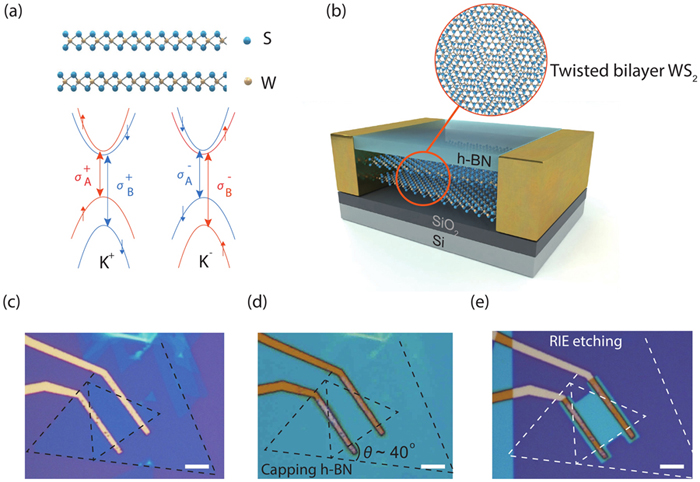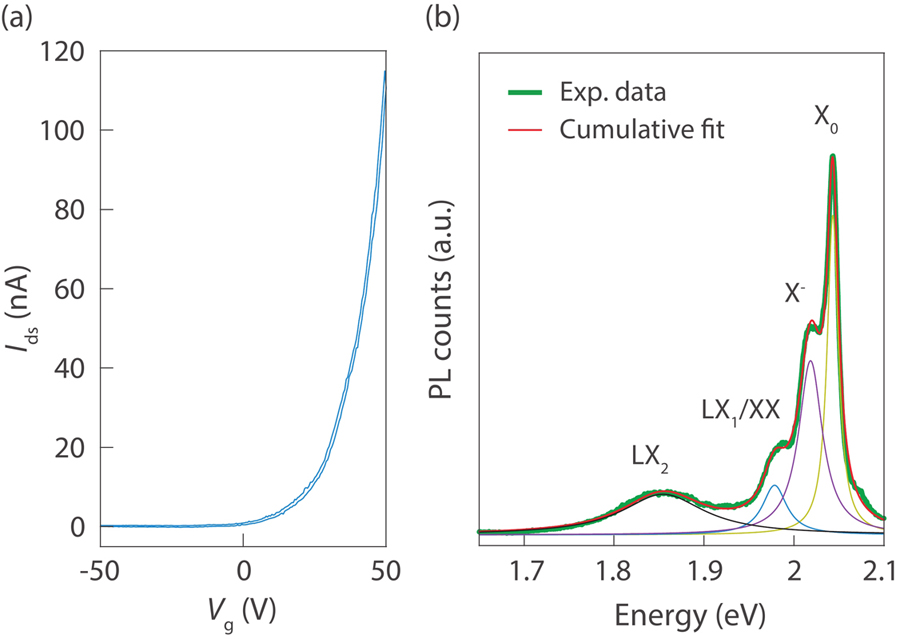Siwen Zhao, Gonglei Shao, Zheng Vitto Han, Song Liu, Tongyao Zhang. Gate tunable spatial accumulation of valley-spin in chemical vapor deposition grown 40°-twisted bilayer WS2[J]. Journal of Semiconductors, 2023, 44(1): 012001
Search by keywords or author
- Journal of Semiconductors
- Vol. 44, Issue 1, 012001 (2023)

Fig. 1. (Color online) (a) Twisted bilayer WS2 crystal structure and schematic of the band extrema at the K+ and K− points in monolayer WS2. The figure shows the conduction-band and valence-band spin splitting and the allowed optical transitions for circularly polarized light. (b) Schematic of the twisted bilayer WS2 (t-WS2)/h-BN heterojunction device. Optical microscope images of (c) twisted bilayer WS2 transistor on SiO2/Si, (d) t-WS2/h-BN heterostructure, and (e) the final device after lithography patterning. The scale bar is 5μm.

Fig. 2. (Color online) (a) Source–drain current as a function of back-gate voltageVg of the device at 20 K forVds =1 V. (b) PL spectra of the heterostructure at 20 K. In the PL plot, the thick green solid line indicates the measured data, and the red solid line shows the Gaussian fitting result. The four Gaussian components are attributed to the neutral excitons (X0), trions (X-), defect-trapped localized exciton (LX1) or biexciton (XX), and defect-trapped localized exciton (LX2).
Fig. 3. (Color online) Spatial map of the Kerr rotation angle under (a)Vg = –80 V, (b)Vg = 0 V, and (c)Vg = 20 V. Signals from metal electrodes are not shown as the polarization of reflected light from electrodes is destructed.
Fig. 4. (Color online) Linecuts of the Kerr rotation map under different back gates. Original data and fits are open markers and solid lines, respectively, which are shifted vertically for clarity.

Set citation alerts for the article
Please enter your email address



